
How to Use Capasitive Soil Moisture Sensor V1.2: Examples, Pinouts, and Specs
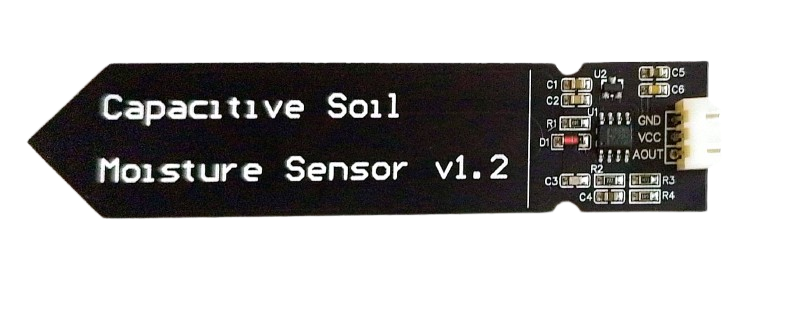
 Design with Capasitive Soil Moisture Sensor V1.2 in Cirkit Designer
Design with Capasitive Soil Moisture Sensor V1.2 in Cirkit DesignerIntroduction
The Capacitive Soil Moisture Sensor V1.2 is an electronic device that measures the volumetric water content in soil. Unlike resistive soil moisture sensors, capacitive sensing is not prone to corrosion, making it a more durable choice for long-term soil moisture detection. This sensor is commonly used in gardening, agriculture, and landscaping to monitor soil moisture levels and to automate watering systems.
Explore Projects Built with Capasitive Soil Moisture Sensor V1.2
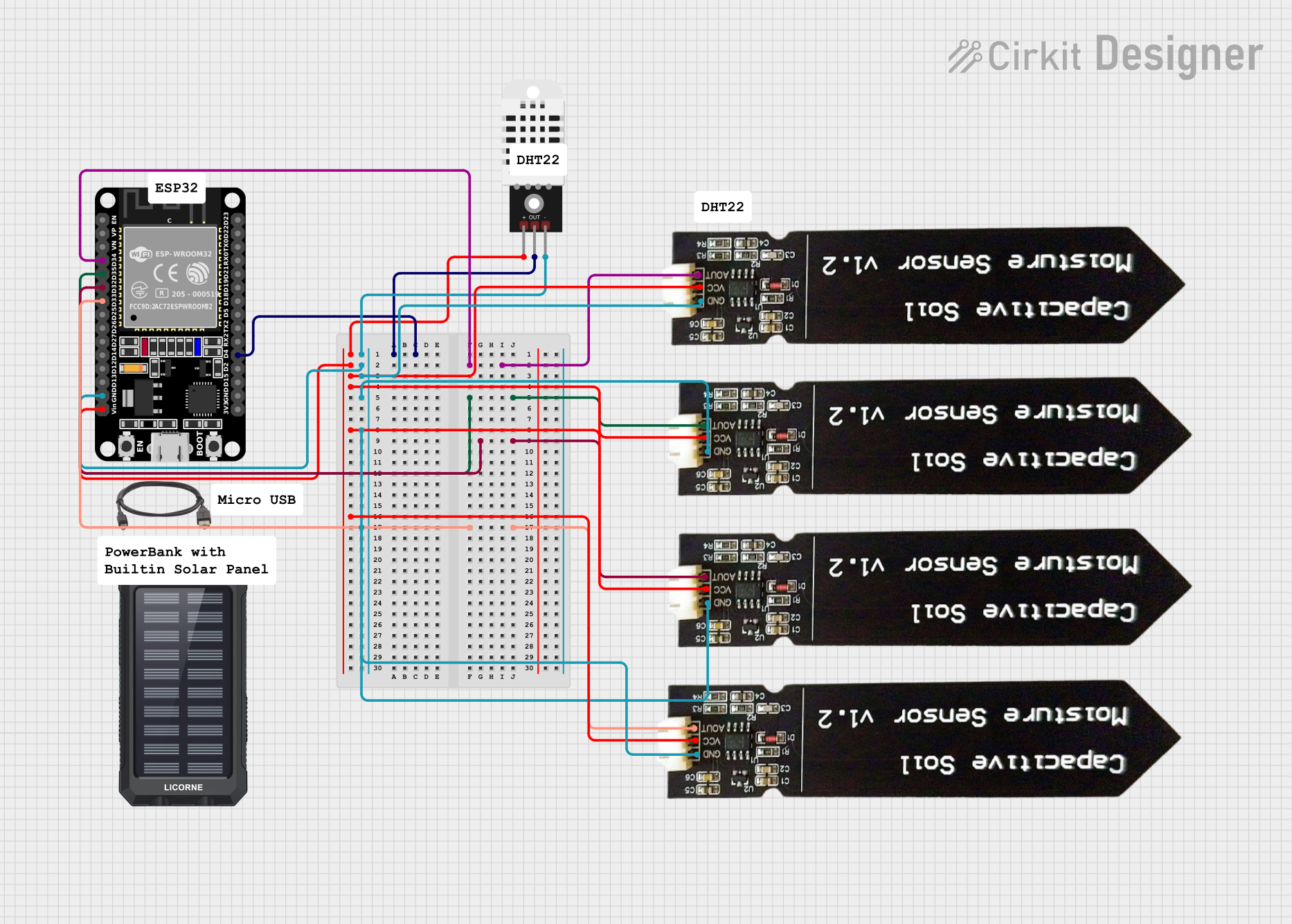
 Open Project in Cirkit Designer
Open Project in Cirkit Designer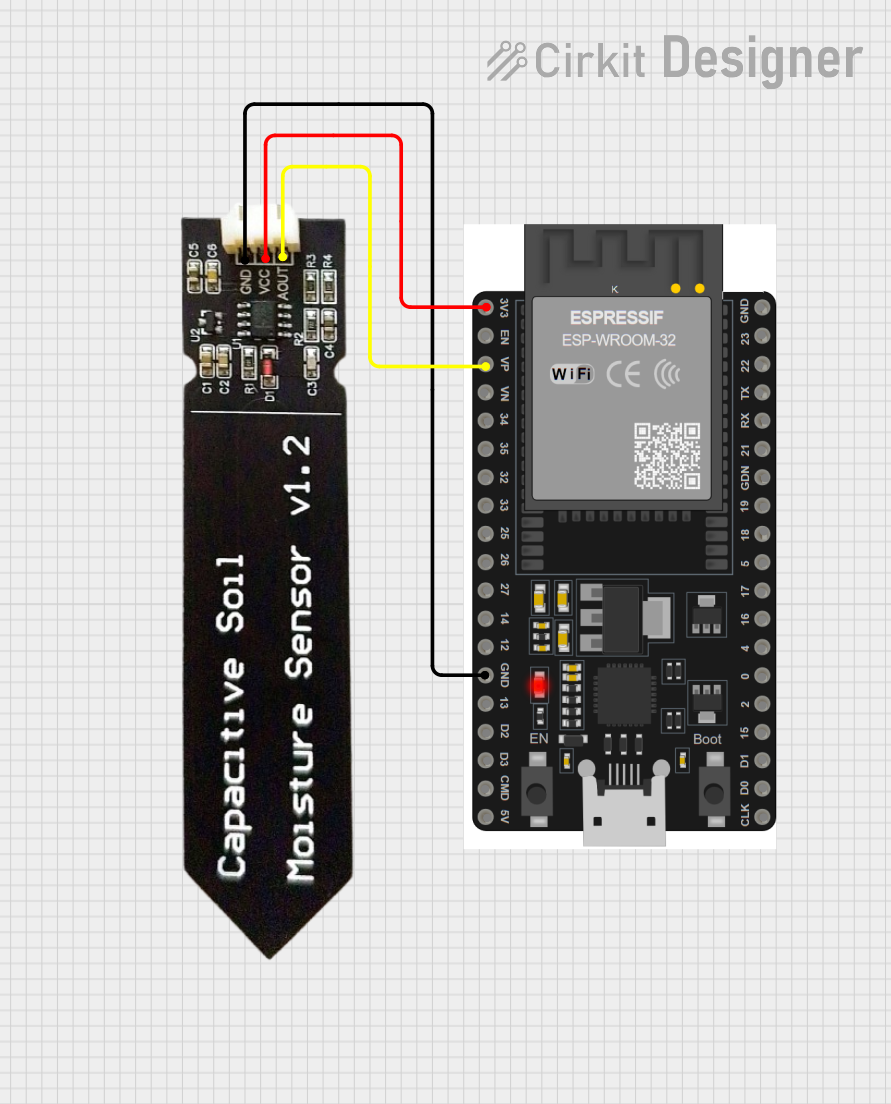
 Open Project in Cirkit Designer
Open Project in Cirkit Designer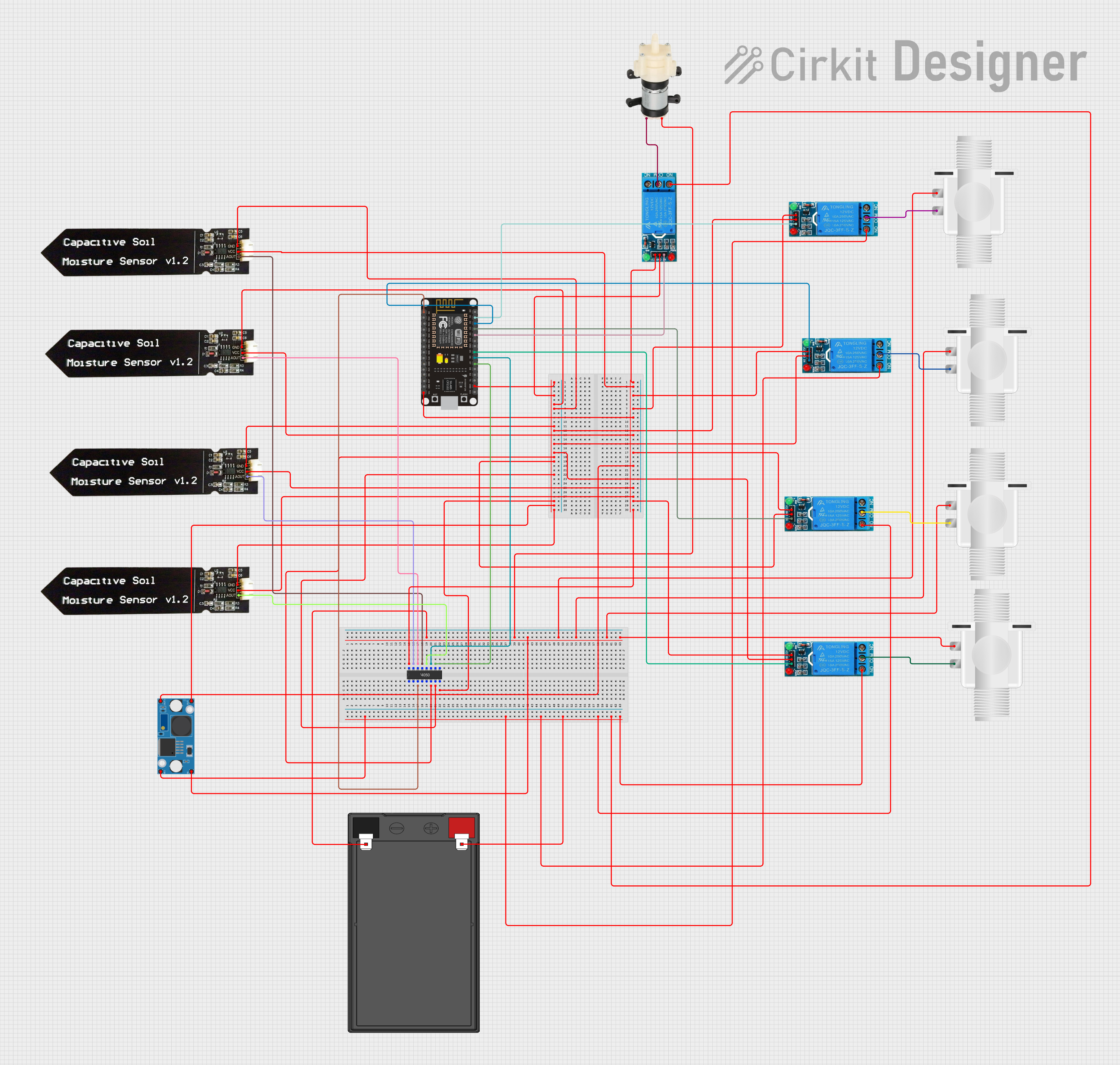
 Open Project in Cirkit Designer
Open Project in Cirkit Designer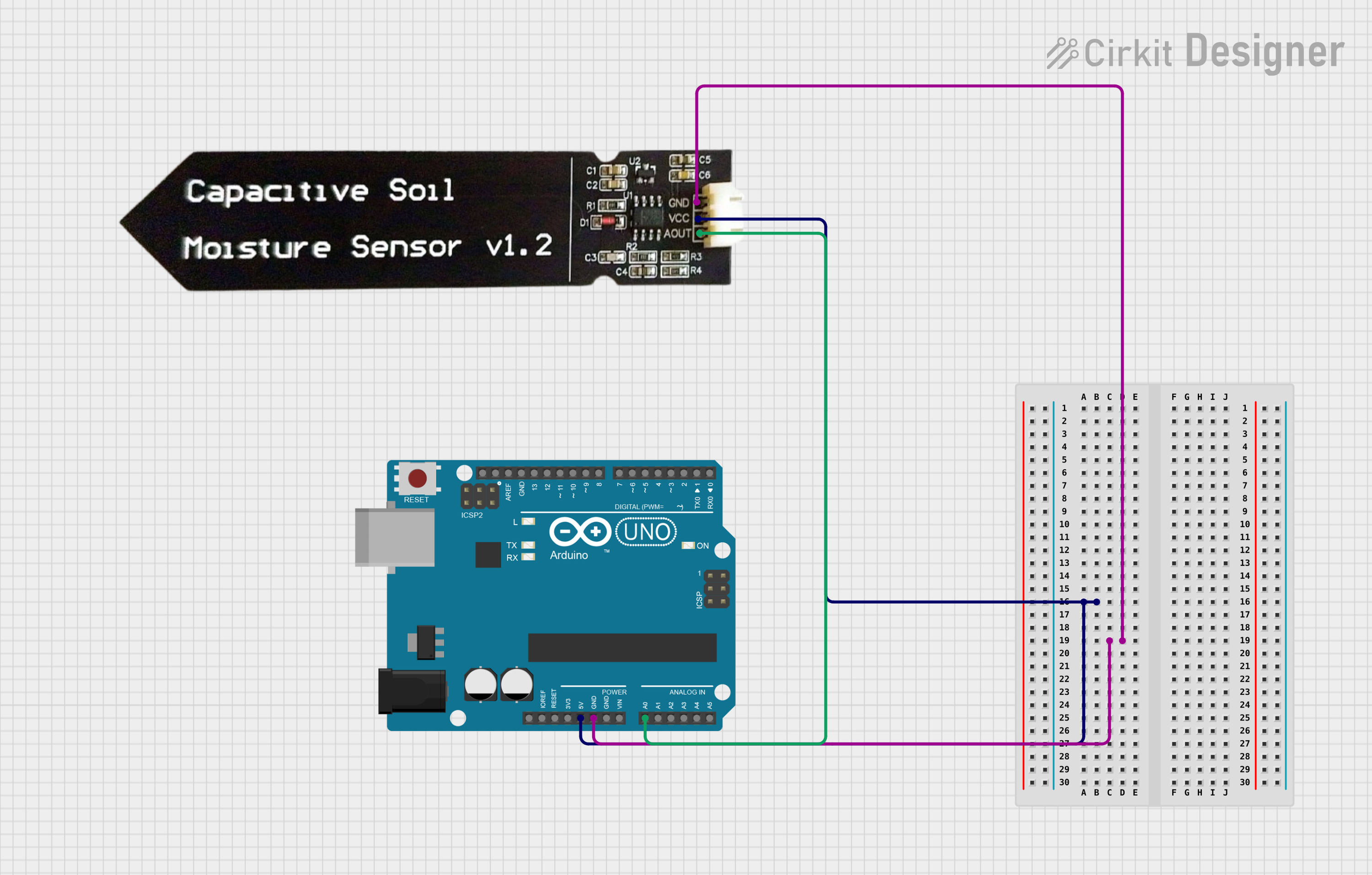
 Open Project in Cirkit Designer
Open Project in Cirkit DesignerExplore Projects Built with Capasitive Soil Moisture Sensor V1.2

 Open Project in Cirkit Designer
Open Project in Cirkit Designer
 Open Project in Cirkit Designer
Open Project in Cirkit Designer
 Open Project in Cirkit Designer
Open Project in Cirkit Designer
 Open Project in Cirkit Designer
Open Project in Cirkit DesignerCommon Applications and Use Cases
- Automated irrigation systems
- Plant watering reminders
- Soil moisture monitoring for agricultural research
- Environmental sensing in smart gardens
Technical Specifications
Key Technical Details
- Operating Voltage: 3.3V to 5.5V
- Output Voltage: 0V to 3.0V
- Current: 5mA
- Interface: Analog
- Sensing Area: 1.2 inches x 0.3 inches
- PCB Size: 3.0 inches x 0.6 inches
Pin Configuration and Descriptions
| Pin Number | Name | Description |
|---|---|---|
| 1 | VCC | Power supply (3.3V to 5.5V) |
| 2 | GND | Ground connection |
| 3 | AOUT | Analog output signal |
Usage Instructions
How to Use the Component in a Circuit
- Connect the VCC pin to the power supply (3.3V or 5V, depending on your system).
- Connect the GND pin to the ground of your system.
- Connect the AOUT pin to an analog input pin on your microcontroller, such as an Arduino UNO.
Important Considerations and Best Practices
- Avoid submerging the sensor completely in water or exposing it to moisture for extended periods to prevent damage.
- Calibrate the sensor for the specific soil type and conditions for accurate readings.
- Use a pull-up resistor if the sensor output is unstable.
- Keep the sensor away from direct sunlight and high temperatures to prevent false readings.
Example Code for Arduino UNO
// Capacitive Soil Moisture Sensor V1.2 - Arduino Example
const int sensorPin = A0; // Analog input pin connected to the sensor
int sensorValue = 0; // Variable to store the sensor value
void setup() {
Serial.begin(9600); // Initialize serial communication at 9600 baud rate
}
void loop() {
sensorValue = analogRead(sensorPin); // Read the sensor value
Serial.print("Moisture Level: ");
Serial.println(sensorValue); // Print the sensor value to the serial monitor
delay(1000); // Wait for 1 second before reading the value again
}
Troubleshooting and FAQs
Common Issues Users Might Face
- Inconsistent Readings: If the sensor provides inconsistent readings, ensure that it is properly calibrated and that the soil is not too dry or too wet.
- No Readings: Check the power supply and wiring connections if the sensor does not output any readings.
Solutions and Tips for Troubleshooting
- Calibration: To calibrate the sensor, take readings from completely dry soil and fully submerged in water to establish the minimum and maximum values.
- Stable Power Supply: Ensure that the sensor is connected to a stable power supply to avoid fluctuations in readings.
- Clean Contacts: Keep the sensor's contacts clean and free from soil or debris to maintain accurate readings.
FAQs
Q: Can the sensor be left in the soil permanently? A: While the sensor is designed for use in soil, prolonged exposure to extremely wet conditions may still affect its lifespan. It is recommended to remove the sensor when not in use.
Q: Is the sensor waterproof? A: The sensor's probe is waterproof, but the electronic components and connections are not. Avoid exposing the top part of the sensor to water.
Q: How do I interpret the sensor's readings? A: The sensor's analog output provides a value between 0 and 1023 (for a 10-bit ADC like that on the Arduino). Lower values typically indicate more moisture in the soil. Calibration is necessary to correlate these values to actual moisture levels.
Q: Can the sensor be used with a 3.3V system? A: Yes, the sensor can operate at 3.3V, but the output range will be lower, and calibration will be necessary for accurate readings.